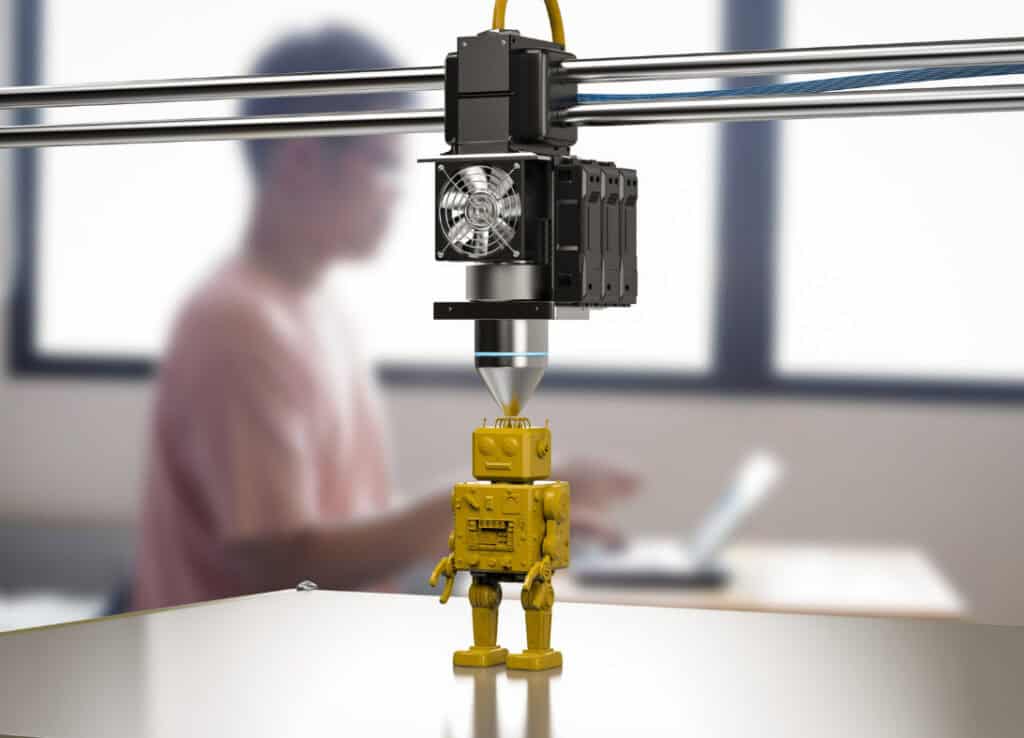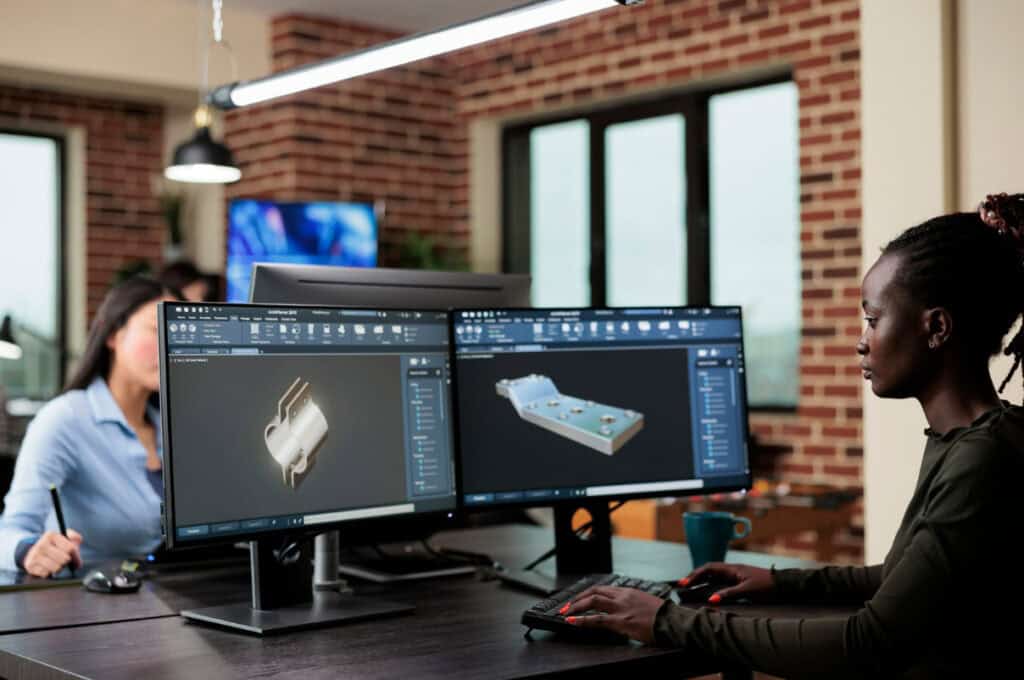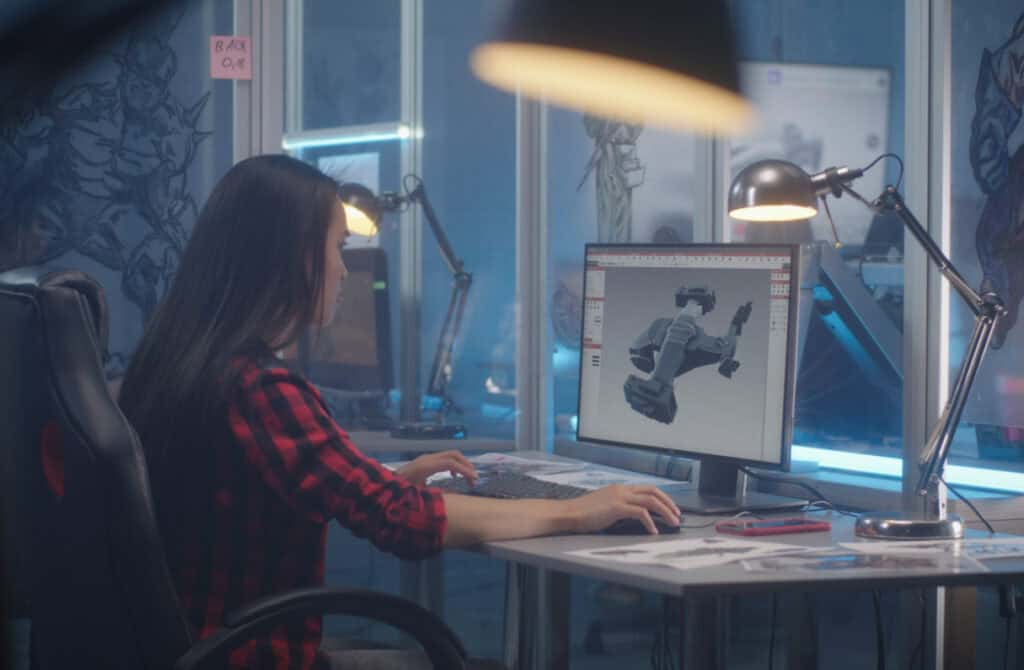Artificial intelligence (AI) is rapidly transforming the way we live, work, and create. One of the industries where AI’s impact is particularly profound is 3D modeling. Whether you’re a seasoned 3D artist or a tech enthusiast fascinated by the possibilities of AI, this post will take you through how AI is shaping the future of 3D modeling.
Table of Contents
From automating tedious tasks to creating entirely new forms of art, AI revolution in 3D modeling is set to redefine the landscape of 3D graphics in ways you might not have imagined.

Why AI and 3D Modeling Go Hand-in-Hand
To understand why AI is a game-changer for 3D modeling, it’s important to recognize the challenges inherent in the field.
Traditional 3D modeling is labor-intensive, requiring countless hours of manual work to create detailed and accurate models. AI’s ability to automate processes and optimize workflows makes it an ideal partner for 3D artists looking to boost productivity without sacrificing quality.

The History of AI in 3D Modeling
AI hasn’t always been a staple in the world of 3D modeling. The early days were marked by basic algorithms that could only handle rudimentary tasks. Fast forward to today, and AI technologies like machine learning and neural networks have become integral to advanced 3d model AI software.
Understanding this evolution can help us appreciate just how far we’ve come and the potential for future advancements.
Enhancing Creativity with AI
One of the most exciting aspects of AI in 3D modeling is its ability to enhance creativity. AI can assist in brainstorming sessions, providing artists with new perspectives and ideas.
Imagine a tool that suggests various design elements or textures based on your initial sketches. AI can even help artists break free from creative blocks by offering alternative solutions, thereby expanding the horizons of artistic expression.
Automating Tedious Tasks
Let’s face it—no one enjoys the monotonous aspects of 3D modeling, such as mesh cleanup or UV unwrapping. AI can automate these tasks, freeing up artists to focus on the more creative aspects of their work. This not only speeds up the workflow but also reduces the risk of human error, resulting in higher-quality models.
Mesh Cleanup
AI algorithms can automatically identify and correct errors in the mesh, ensuring that the final model is clean and optimized. This is particularly useful for complex models where manual cleanup would be time-consuming and tedious.
UV Unwrapping
UV unwrapping is another area where AI shines. Traditional unwrapping methods can be cumbersome, requiring meticulous attention to detail. AI can automate this process, generating efficient UV maps that are ready for texturing.
Real-Time Rendering
Rendering has always been a bottleneck in 3D modeling. The process can take hours, if not days, depending on the complexity of the scene.
AI-powered real-time rendering solutions are changing the game by significantly reducing rendering times without compromising on quality. These tools use advanced algorithms to optimize the rendering process, enabling artists to see their changes in real-time and make adjustments on the fly.
AI in Animation
Animation is another area where AI is making substantial inroads. Traditional animation techniques are labor-intensive, requiring frame-by-frame adjustments. AI can automate many of these processes, allowing animators to create more complex and realistic animations in less time.
Motion Capture
AI can enhance motion capture technology by automatically cleaning up and refining captured data, resulting in smoother animations. This is particularly beneficial for animators working on large-scale projects with tight deadlines.
Procedural Animation
Procedural animation, driven by AI algorithms, can generate realistic movements based on predefined rules. This allows for more dynamic and adaptable animations that can respond to different scenarios in real-time.
Texturing and Shading
Creating realistic textures and shaders is a challenging aspect of 3D modeling. AI can simplify this process by automatically generating textures based on reference images or predefined parameters. This not only saves time but also ensures consistency across different models.
AI-Driven Design Tools
Several AI-driven design tools are already making waves in the 3D modeling industry. These tools leverage machine learning algorithms to assist artists in various stages of the design process, from initial concept sketches to final rendering.
DeepDream by Google
Google’s DeepDream is a prime example of how AI can be used to generate surreal and imaginative designs. The tool uses neural networks to transform ordinary images into dream-like visuals, providing artists with a new source of inspiration.
Nvidia’s GauGAN
Nvidia’s GauGAN uses AI to convert simple drawings into photorealistic images. Artists can sketch basic shapes and outlines, and the AI fills in the details, creating stunningly realistic scenes. This tool is particularly useful for concept artists and designers looking to quickly visualize their ideas.
The Role of AI in Collaborative Projects
Collaboration is key in many 3D modeling projects, especially those involving large teams spread across different locations. AI can facilitate collaboration by providing tools that streamline communication and project management.
For example, AI-powered platforms can automatically track changes, manage assets, and ensure that everyone is on the same page.
AI Revolution in 3D Modeling – Ethical Considerations
While the benefits of AI in 3D modeling are undeniable, it’s important to consider the ethical implications. Issues such as job displacement and the potential for AI-generated content to infringe on intellectual property rights must be addressed. Ensuring that AI is used responsibly and ethically is crucial for the sustainable growth of the industry.
Future Trends
The future of AI in 3D modeling looks incredibly promising. Emerging technologies such as generative adversarial networks (GANs) and reinforcement learning are expected to drive further advancements. These technologies have the potential to create even more realistic and detailed models, pushing the boundaries of what’s possible in 3D art.
Generative Adversarial Networks
GANs consist of two neural networks that compete against each other to generate realistic images. This technology is already being used to create highly detailed textures and models, and its applications in 3D modeling are expected to grow in the coming years.
Reinforcement Learning
Reinforcement learning involves training AI algorithms through trial and error. This approach can be used to develop AI systems that learn to perform complex tasks, such as animating characters or simulating realistic physics.

Getting Started with AI in 3D Modeling
If you’re a 3D artist or a tech enthusiast looking to explore the world of AI, there are several resources available to help you get started. Online courses, tutorials, and community forums can provide valuable insights and guidance.
Online Courses
Platforms like Coursera and Udacity offer specialized courses on AI and 3D modeling. These courses cover a wide range of topics, from the basics of machine learning to advanced techniques in AI-driven design.
Community Forums
Joining online communities such as Reddit and Stack Overflow can provide access to a wealth of knowledge and experience. These forums are great places to ask questions, share tips, and connect with other professionals in the field.
Artificial intelligence is revolutionizing the world of 3D modeling, offering new tools and techniques that enhance creativity, streamline workflows, and improve the quality of final products.
For 3D artists and tech enthusiasts alike, understanding and leveraging the power of AI is essential for staying ahead in this rapidly evolving industry.
Whether you’re looking to automate tedious tasks, create stunning animations, or collaborate more effectively, AI has the potential to transform the way you work. Explore the possibilities, experiment with new tools, and join the AI revolution in 3D modeling.



